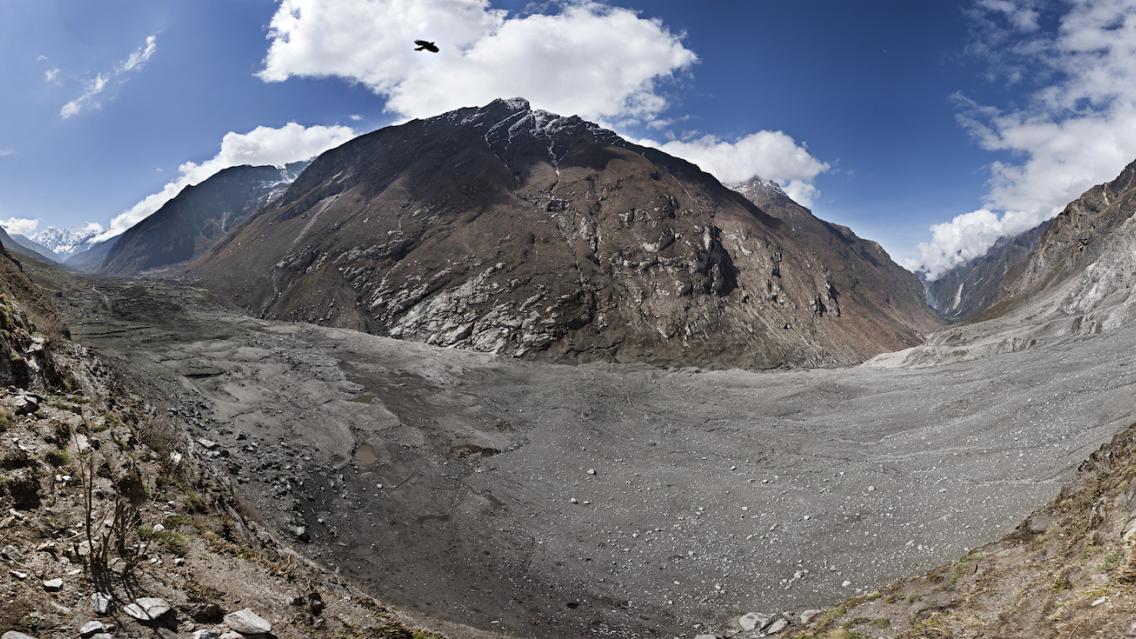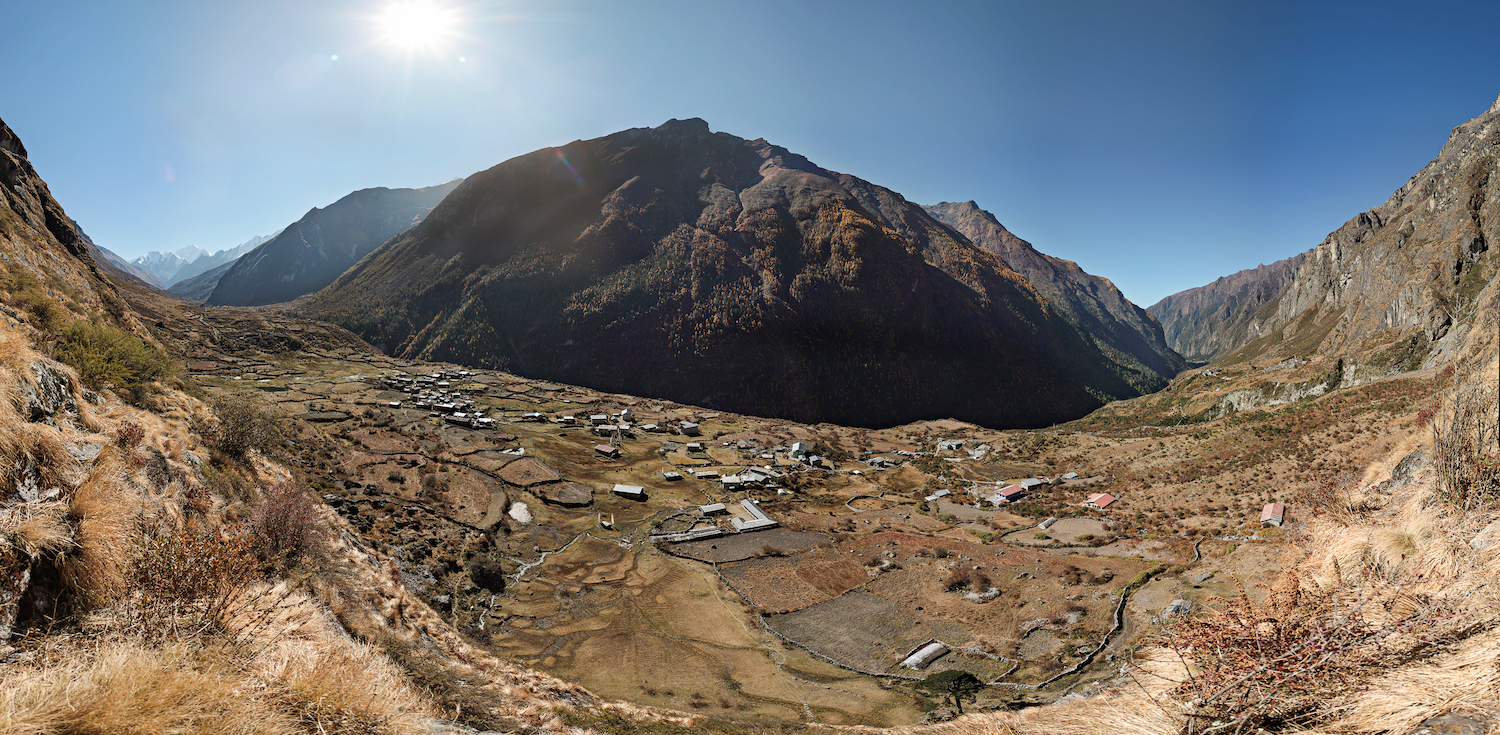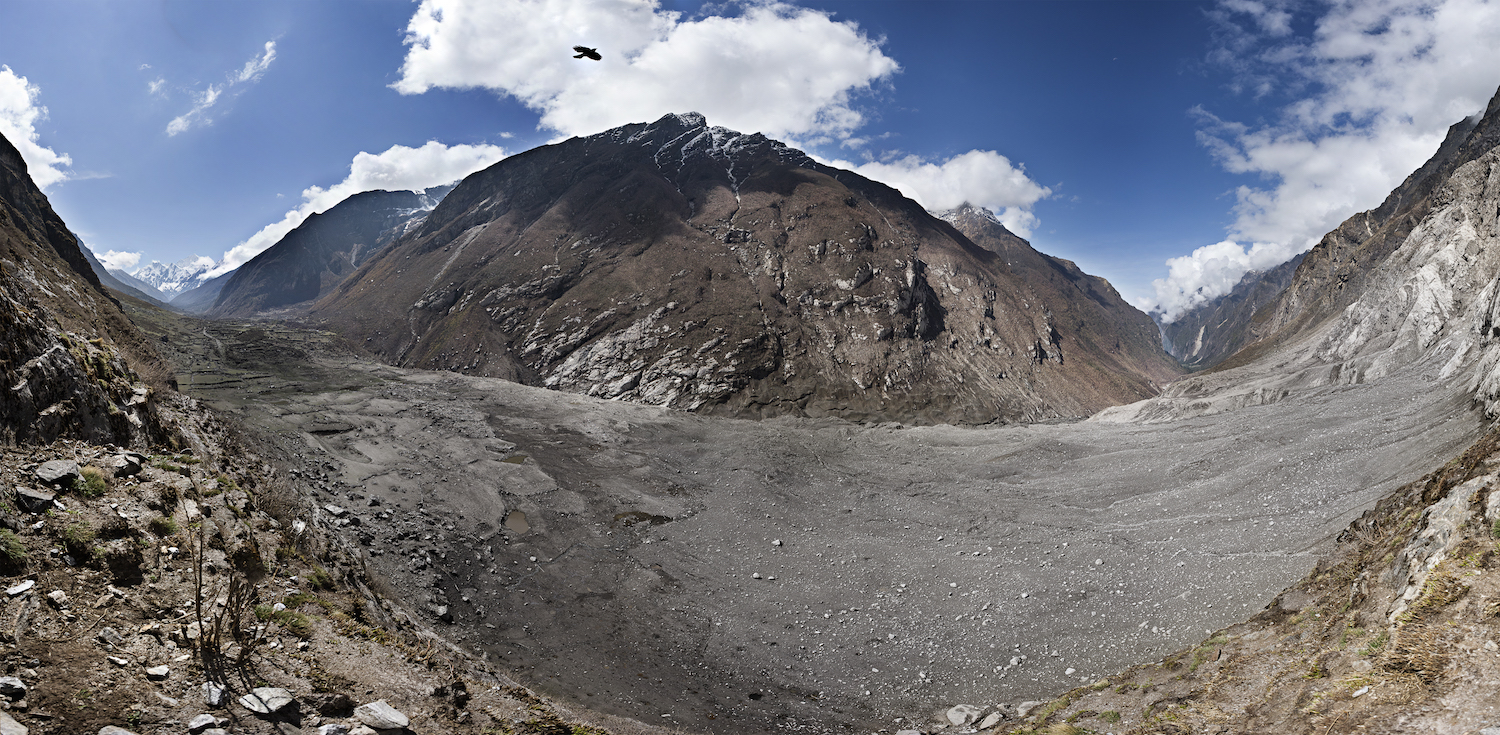ICIMOD and SERVIR Applied Sciences Team member contribute lessons learned from the 2015 Gorkha earthquake's induced geohazards

The International Centre for Integrated Mountain Development (ICIMOD), hosting the Kathmandu-based SERVIR-Himalaya hub for the Hindu Kush-Himalaya region, has released a new publication summarizing key findings about induced geohazards due to the 2015 Gorkha earthquake that struck Nepal and neighboring countries. The main quake—a massive M7.8 event—on April 25, 2015, was followed by hundreds of aftershocks, including one of M7.3 just one year ago today. The main shock and aftershocks killed over 9000 people in 4 countries; almost 98% of the casualties were in Nepal. The quakes triggered at least 4,300 landslides and large ice avalanches, but fortunately, no significant glacier lake outburst floods.
While most of these mass movements did not incur major losses aside from minor damage to agricultural fields or trails, others slammed into hydroelectric power projects, dammed rivers and formed unstable lakes, took away homes, or buried whole villages. Especially tragic among the induced geohazards were the landslides in Langtang Valley. Over 300 people were killed in villages along a popular trekking route for foreigners and Nepalis. Award-winning cinematographer David Breashears captured a sobering pair of images, one in 2012, three years before the quake, and the other on May 12, 2015, just two hours before the largest aftershock.

A heartbreaking scene is captured in this before- and after-disaster image pair acquired and made
available by David Breashears/GlacierWorks. The “before” image (above) was taken in 2012, and the
“after” image (below) on May 12, 2015. Click on the images to view full-size.
The earthquake spurred a large volunteer-driven effort to map the landslides, to investigate other induced geohazards using satellite imagery, and to provide assistance to scientists at ICIMOD and disaster response officials. Jeffrey Kargel of the University of Arizona led the volunteer effort, while NASA’s Applied Sciences/Disasters team coordinated the needed satellite imaging response.
The Skoll Global Threats Fund was the principal sponsor of the ICIMOD report, “The Impact of Nepal’s 2015 Gorkha Earthquake-Induced Geohazards” (Shrestha et al. 20161). Significant contributions for the earlier studies and follow-on investigations summarized in the report were supported in part by the SERVIR program along with several other organizations. A result of the follow-up is the newly released ICIMOD report. This study goes beyond an earlier article in Science magazine, which emphasized the scientific details of the induced landslide distribution (Kargel et al. 20162). The new report includes a summary of the quakes’ induced geohazards, the effects on people and infrastructure, and recommendations for follow-on consideration by researchers and funding agencies.
Notes:
- Arun B. Shrestha is the lead author of the report and is a Senior Climate Change Specialist and the Manager for the River Basins and Cryosphere and Atmospheres programme at ICIMOD.
- Kargel, a coauthor of the report and the lead author of the earlier paper in Science, is from the University of Arizona and is a member of the SERVIR Applied Sciences Team.
- SERVIR is a joint development initiative of NASA and USAID, working in partnership with leading regional organizations around the globe, including ICIMOD as the hub for the Hindu Kush-Himalaya region. The overall goal of SERVIR is to help developing countries use information provided by Earth observing satellites and geospatial technologies for managing climate risks, land use, and natural disasters.
References:
- Shrestha, A.B., S.R. Bajracharya, D.S. Kargel, and N.R. Khanal, and A. Karki, B.D. Collins, D.H. Shugar, D.R. Gurung, D. Regmi, D. Pathak, D. Stumm, G. Leonard, J. Shea, M.R. Dhital, M.L. Rijal, P. Ghimire, P. Kraaijenbrink, P. Mool, H. Koirala, S.B. Maharjan, U.K. Haritashya, V. Dangol, and W. Immerzeel, 2016, The Impact of Nepal’s 2015 Gorkha earthquake-induced geohazards, Kathmandu, Nepal, 36 pp.
- Kargel, J.S., G.J. Leonard, D.H. Shugar, U.K. Haritashya, A. Bevington, E.J. Fielding, K. Fujita, M. Geertsema, E.S. Miles, J. Steiner; and E. Anderson, S. Bajracharya, G.W. Bawden, D.F. Breashears, A. Byers, B. Collins, M.R. Dhital, A. Donnellan, T.L. Evans, M.L. Geai, M.T. Glasscoe, D. Green, D.R. Gurung, R. Heijenk, A. Hilborn, K. Hudnut, C. Huyck, W.W. Immerzeel, JIANG Liming, R. Jibson, A. Kääb, N.R. Khanal, D. Kirschbaum, P.D.A. Kraaijenbrink, D. Lamsal, LIU Shiyin, LV Mingyang, D. McKinney, N. K. Nahirnick, NAN Zhuotong, S. Ojha, J. Olsenholler, T.H. Painter, M. Pleasants, Pratima KC, QI Yuan, B.H. Raup, D. Regmi, D.R. Rounce, A. Sakai, SHANGGUAN Donghui, J.M. Shea, A.B. Shrestha, A. Shukla, D. Stumm, M. van der Kooij, K. Voss, WANG Xin, B. Weihs, D. Wolfe, WU Lizong, YAO Xiaojun, M.R. Yoder, and N. Young, 2016, Geomorphic, Tectonic, and Geologic Controls of Geohazards Induced by Nepal’s 2015 Gorkha Earthquake, Research Article, Science, 351 (6269), aac8353.

